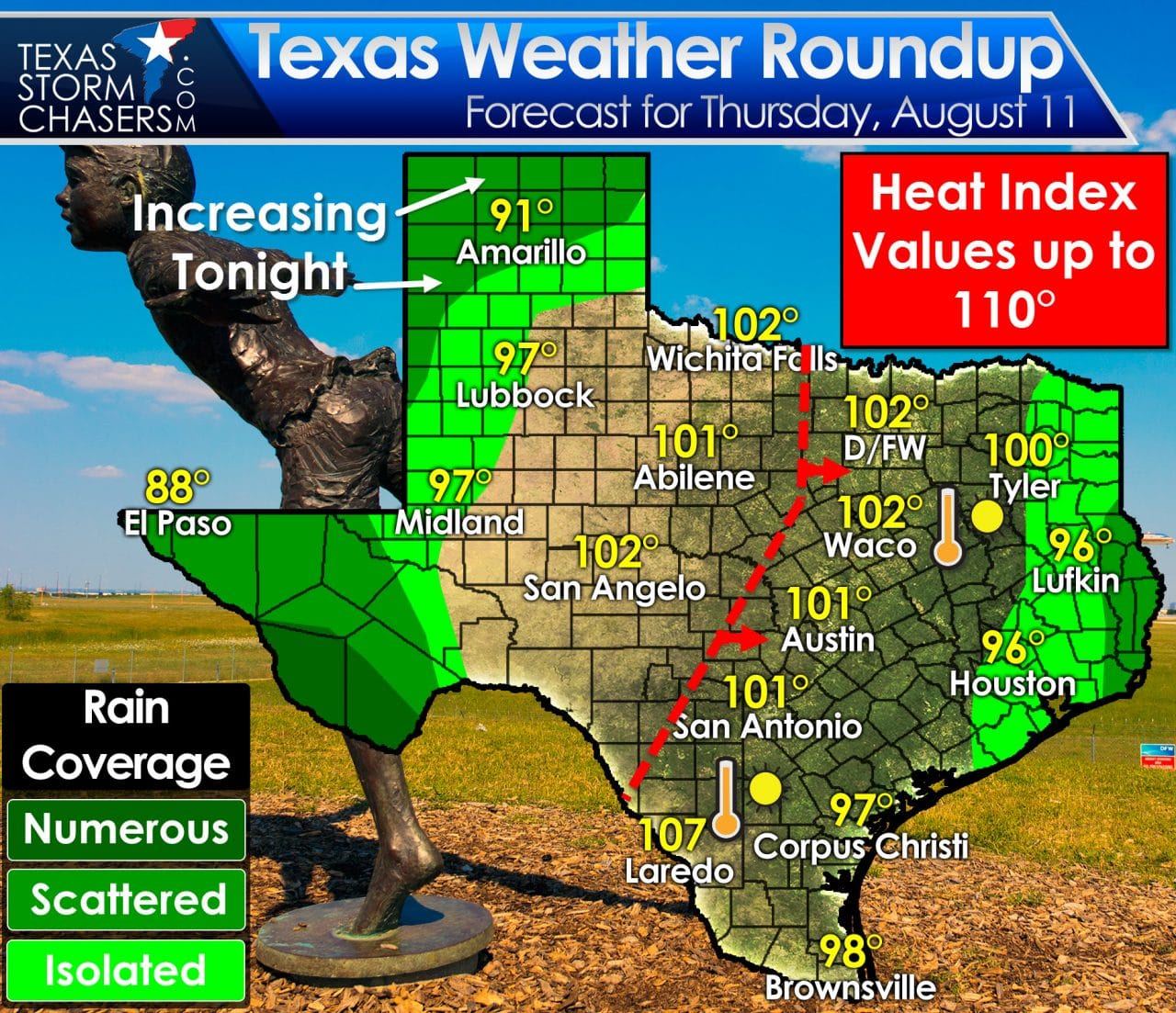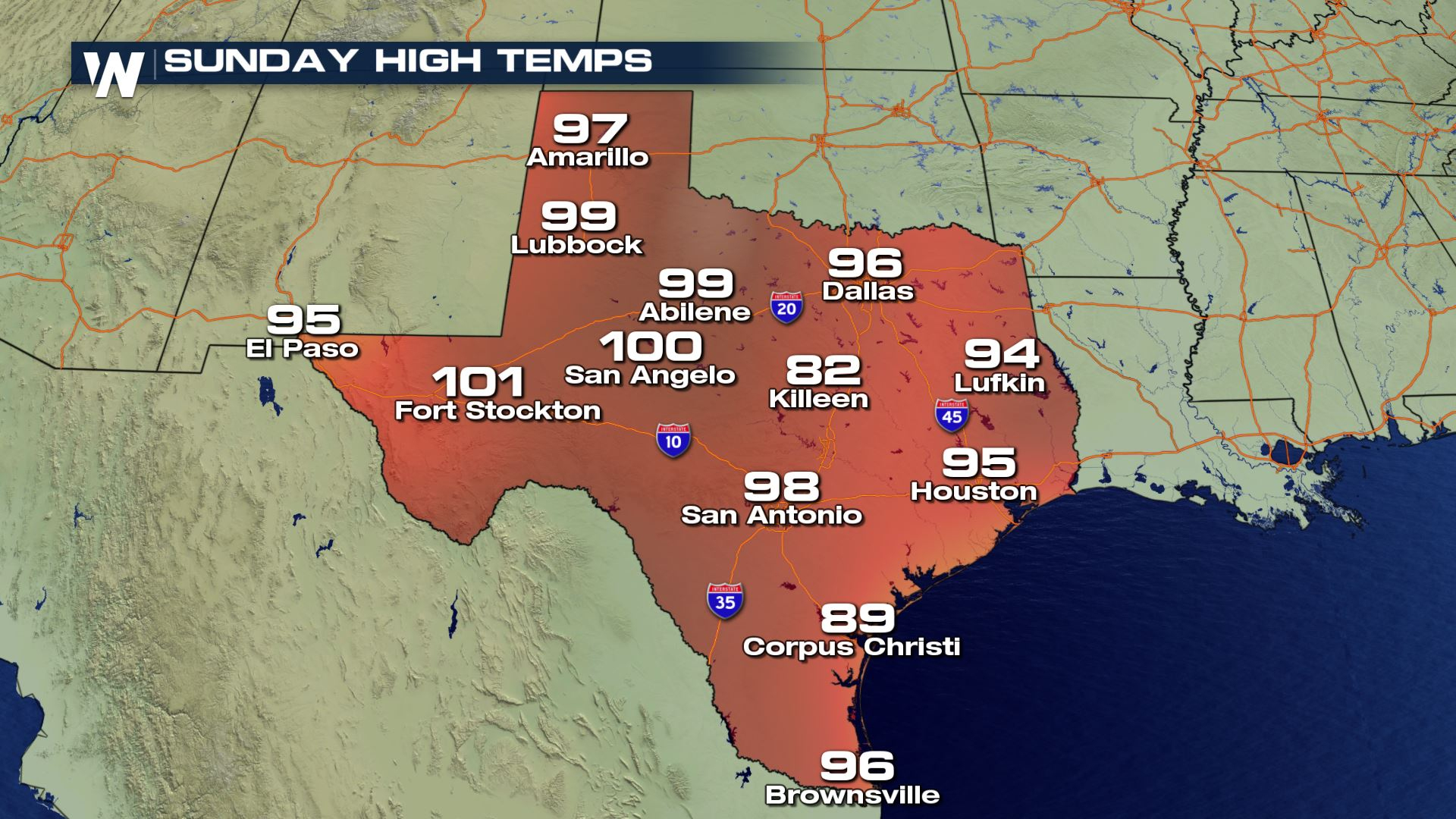Current Weather Conditions and Forecasts

Texas weather – Texas is currently experiencing a mix of weather conditions across the state. The eastern and southern regions are facing a cold front, bringing heavy rainfall, thunderstorms, and possible flooding. The central and western regions, on the other hand, are enjoying mild temperatures and clear skies.
Forecasted Weather Conditions
The forecasted weather conditions for the upcoming week indicate a gradual shift in weather patterns. The cold front in the east and south is expected to move slowly eastward, bringing drier conditions by midweek. The central and western regions will continue to experience mild temperatures, with occasional cloud cover.
Weather Alerts and Advisories
Currently, there are no active weather alerts or advisories in effect for Texas. However, residents in the eastern and southern regions should be prepared for possible flooding and localized power outages due to the heavy rainfall.
Historical Weather Patterns: Texas Weather

Texas experiences a wide range of weather patterns throughout the year, influenced by its diverse geography and location in the central United States. The state’s climate is characterized by hot, humid summers and mild winters, with significant variations in temperature and precipitation across different regions.
Texas can be broadly divided into three climate zones: the humid subtropical zone in the east, the semi-arid zone in the central and western regions, and the arid zone in the far west. Each zone experiences distinct weather patterns and seasonal variations.
Seasons and Characteristic Weather Conditions, Texas weather
Texas has four distinct seasons:
- Spring (March-May): Spring in Texas is typically mild and pleasant, with average temperatures ranging from 50°F to 70°F. The season is characterized by occasional showers and thunderstorms, as well as an increase in humidity.
- Summer (June-August): Summers in Texas are hot and humid, with average temperatures often exceeding 90°F. The state experiences frequent thunderstorms during this season, which can bring heavy rainfall and occasional severe weather, such as hail and tornadoes.
- Autumn (September-November): Autumn in Texas is generally mild and dry, with average temperatures ranging from 60°F to 80°F. The season is known for its beautiful fall foliage and a decrease in humidity.
- Winter (December-February): Winters in Texas are mild in the southern regions and colder in the northern regions. Average temperatures range from 40°F to 60°F in the south and 30°F to 50°F in the north. The state experiences occasional cold fronts and winter storms, which can bring freezing temperatures, snow, and ice.
Extreme Weather Events
Texas has a history of experiencing extreme weather events, including hurricanes, tornadoes, floods, and droughts. These events can cause significant damage to infrastructure, property, and human life.
Hurricanes are a major threat to the coastal regions of Texas. The state has been hit by several major hurricanes in recent years, including Hurricane Harvey in 2017 and Hurricane Ike in 2008. These storms can bring strong winds, heavy rainfall, and storm surge, which can cause widespread flooding and damage.
Tornadoes are another common weather hazard in Texas. The state is located in the “Tornado Alley” region of the United States, which experiences a high frequency of tornadoes each year. Tornadoes can cause severe damage to buildings, infrastructure, and property.
Floods are also a major problem in Texas. The state is prone to both riverine flooding and flash flooding. Riverine flooding occurs when rivers and streams overflow their banks due to heavy rainfall. Flash flooding occurs when a large amount of rain falls in a short period of time, overwhelming drainage systems and causing rapid flooding.
Droughts are another extreme weather event that can affect Texas. Droughts occur when there is a prolonged period of below-average precipitation. Droughts can cause widespread crop failures, water shortages, and wildfires.
Texas weather is known for its unpredictability, with scorching summers and mild winters. But in the heart of this vast state lies a hidden gem called Beryl , a tiny town where the weather seems to dance to a different tune.
With its tranquil streets and rolling hills, Beryl offers a respite from the often-harsh Texan climate, inviting visitors to embrace its gentle embrace and revel in the beauty of nature’s unpredictable ways.
Texas weather can be unpredictable, ranging from scorching summers to freezing winters. However, the state is also prone to hurricanes, such as the infamous Hurricane Beryl that made landfall in 2006. While Texas weather can be harsh at times, it also offers breathtaking sunsets, clear skies, and a diverse range of ecosystems.